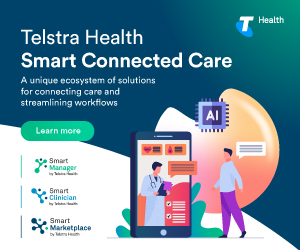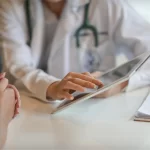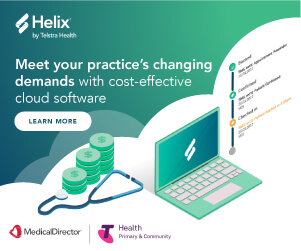5 ways technology is transforming healthcare
For the last five years, technology has been the main catalyst for change within the healthcare industry and directly improved both the patient and provider experience.
A study by KMPG revealed one of the biggest changes we are seeing today is technology, which is dramatically improving access to healthcare services in the UK, across Europe, the US and many parts of the world.
And from remote monitoring devices to Apple HealthKit, electronic medical records to glucose monitoring contact lenses, technology has played the leading role in creating a new Digital Health ecosystem. In this article, we take a look at five ways technology is impacting healthcare in 2018.
1. Smartphones and mobile devices
It’s been eight years since the launch of these pocket-sized devices we now know so well, and smartphones can now serve as the hub for sophisticated new diagnostic and treatment technologies.
Already there are new devices including ultrasounds, ECG monitors, microscopes and dermatascopes that can view skin cancers and blood pressure monitors that can be plugged into a smartphone. A picture of an inner ear or throat taken on a smart phone can help a doctor diagnose and infection.
On top of this, mobile devices can perform ECGs, DIY blood tests, or serve as a thermometer, all without even leaving they house. With help from automation, patients can even be prompted to check their weight, pulse, or oxygen levels, and enter results into mobile patient portals. Even better: They can transmit the results to my doctor in real time. Those details, when entered regularly, can help predict one’s risk for heart disease and other illnesses, ultimately saving lives.
One app even allows you to scan your vital signs just by placing the phone on your forehead to measure heart rate, and body temperature.
Smartphones are also highly effective data collection devices and can record a lot of detail about people’s lives. Apple is currently seeking to support large-scale studies using patients’ iPhones by providing its ‘ResearchKit’ software platform for researchers to tackle any research question. Meanwhile uMotif is seeking eventually to build a 100,000-person study into Parkinson’s disease, tracking variables using a smartphone app.
2. Machine learning
New techniques in machine learning have evolved to provide better diagnostic support. Both of the most famous AI-enabled systems, IBM’s Watson and Google’s DeepMind, have already started to explore potential applications in health care. For example, IBM Watson is analyzing how applying machine learning to large amounts of unstructured data like clinical guidelines, scientific literature and treatment protocols could help optimise cancer treatment.
Meanwhile Enlitic in the United States has created a tool for radiologists that uses previous findings and other data associated with existing images in its databases to spot patterns in images and the data to help spot likely mistakes and rule out extremely unlikely options.
3. Mobility and cloud access
Mobility and cloud access have been a tremendous leap in technological advancement for increasing accessibility for patients and doctors alike. From managing patient appointments, sharing diagnostic outcomes to interoperability efficiencies, cloud-based solutions are fast becoming integral to a better healthcare ecosystem.
By 2018, it’s estimated that 65% of interactions with health care facilities will occur by mobile devices. Some 80% of doctors already use smartphones and medical apps, with 72% accessing drug info on smart phones on a regular basis.
4. VR and AR
Virtual reality is set to quickly change the lives of patients and physicians alike. Already, Embodied Labs’ “We Are Alfred” uses VR technology to show young medical students what ageing means. Everyone can be the hypothetical ‘Alfred’ for 7 minutes, and experience how it feels like to live as a 74 year-old man with audio-visual impairments. The technology’ ultimate goal is to solve the disconnection between young doctors and elderly patients due to their huge age difference.
At the same time, augmented reality is also offering distinctive features to drive the future of medicine forward. While not as immersive as AR, VR also has the potential to help medical students prepare better for real-life operations, as well as enabling surgeons to further enhance their capabilities. For instance, advancements such as Medsights Tech are creating 3-dimensional reconstructions of tumors, empowering surgeons with ‘x-ray views’ without any radiation exposure, in real time.
5. Genomics
Advances in genome sequencing and the associated field of genomics are also set to offer us better understanding of how diseases affect different individuals. With the genetic profile of a person’s disease and knowledge of their response to treatment, it should be possible to find out more about the likely effectiveness of medical interventions such as prescribing drugs to treat a disease (pharmacogenomics).
In Australia, Melbourne-based genomics expert Dr Ryan van Laar is already well on his way to making a new test for melanoma available in with the announcement that his groundbreaking discoveries will be published in the British Journal of Cancer.
Using the new genomics technology, ‘Melaseq’ pinpoints the molecular fingerprint of melanoma, even in the earliest stages. It is anticipated Melaseq could increase early detection by being used in the screening of high-risk individuals, and post-surgery patients could also be tested to see if treatment was successful.









